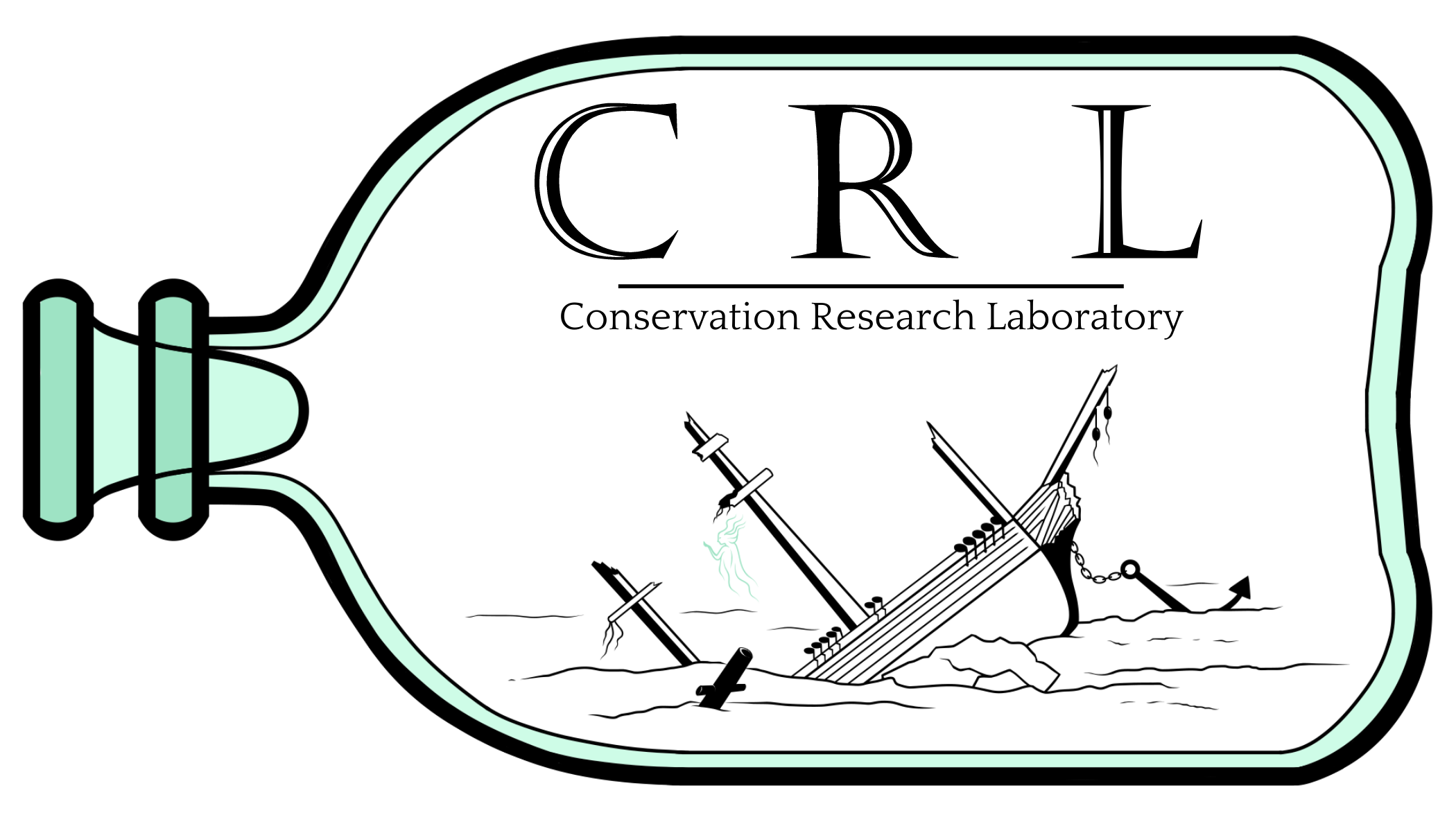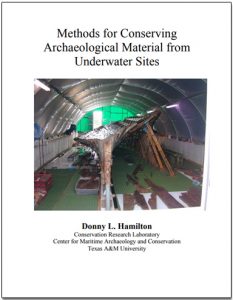Conservation Research Laboratory

The Conservation Research Laboratory (CRL), founded by Dr. Donny Hamilton and currently directed by Dr. Chris Dostal, is one of the oldest continuously operated conservation laboratories that deals primarily with archaeological material from shipwrecks and other underwater sites. Operating under the Center for Maritime Archaeology and Conservation, CRL plays an important role in the Nautical Archaeology Program at Texas A&M University (TAMU), and works closely with all of the excavation projects of the TAMU-affiliated Institute of Nautical Archaeology in developing new conservation strategies. In fact, the Nautical Archaeology Program’s graduate students are a big part of the work done at CRL and CRL is an integral part of each student's academic training in artifact conservation.
CRL deals with large complex archaeological projects year-round and consists of three laboratories. One is used primarily to teach conservation classes to students at TAMU; it is also equipped to conduct conservation of small inorganic and organic artifacts. The second laboratory is designed to handle large multi-year projects with massive iron artifacts such as cannons and anchors, and literally thousands of artifacts. In 2015, a third laboratory, the Archaeological Analytical Laboratory, was established to provide the detailed analytical data required by archaeologists.
All kinds of artifacts are treated at CRL, from those made of iron, copper, brass, or pewter to those made of wood, leather, glass, or ceramic. While CRL is best known for large-scale conservation of shipwreck materials, such as La Belle, USS Westfield, or CSS Georgia, we also conserve small artifact collections and single artifacts for archaeological organizations, museums, and private individuals from both waterlogged and terrestrial contexts.
Archaeological Conservation Certificate
The Conservation Research Laboratory (CRL) at Texas A&M University is one of the oldest and best known conservation facilities in the United States. Since 1978, CRL has been a component of the academic program in the Department of Anthropology and is one of the main research laboratories of the Center for Maritime Archaeology and Conservation. The laboratory focuses on the preservation of archaeological material culture from marine environments, but has the expertise to preserve material from terrestrial sites as well.
Because of the pioneering research of CRL, archaeological conservators from around the world have expressed an interest in participating in short-term, specific conservation training opportunities. The Conservation Training Certificate is designed to meet the needs of these individuals and students who do not, for any number of reasons have the time or resources to come to Texas A&M University for a degree in Anthropology or Nautical Archaeology, but are able to come here for 12 hours of courses in archaeological conservation training.
If you have an interest in the Archaeological Conservation Training Certificate, please read more about it.
Conservation Manual

The proper citation for using the Conservation Manual is:
Donny L. Hamilton. "Methods of Conserving Underwater Archaeological Material Culture," Nautical Archaeology Program, 1998, Texas A&M University, http://nautarch.tamu.edu/. Date of Access.
The Conservation Manual is a compilation of the theories and practices utilized by the conservators at the CRL. It has been available online since the Spring of 1998, and has been continuously updated to reflect innovations and trends in conservation science. The emphasis of this manual is the conservation of material from underwater sites, especially marine sites, but the conservation of material from terrestrial sites is also discussed. While this laboratory manual is posted for use by students enrolled in the conservation classes offered by the Nautical Archaeology Program, others may download and use the manual; proper credit, however, must be given.
Contract Services
Read about the faculty and conservators who run the Conservation Research Laboratory. We are also aided by several individuals who volunteer their time to help conserve artifacts. If you are interested in joining the volunteers at the CRL, please contact our lab manager.
Support
Monetary donations and volunteer workers are vital to the ongoing success of the Conservation Research Laboratory. If you would like to volunteer your time and expertise, please contact us here. If you would like to become one of our donors, please click the link below and direct your gift to: Center for Maritime Archaeology and Conservation.
